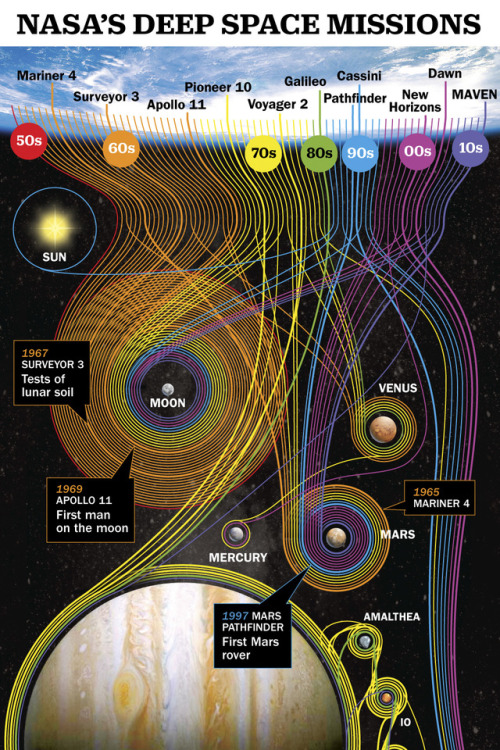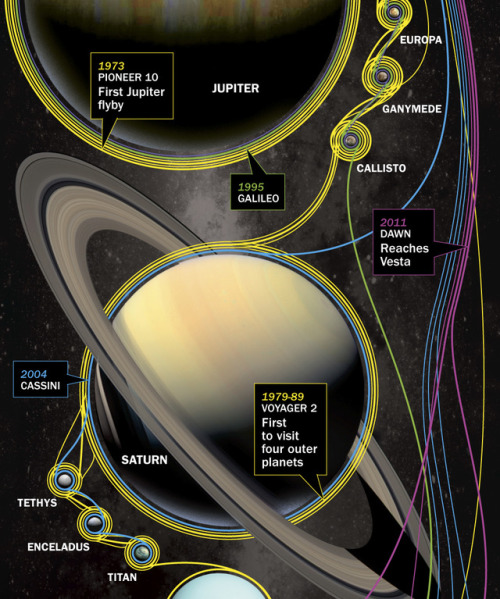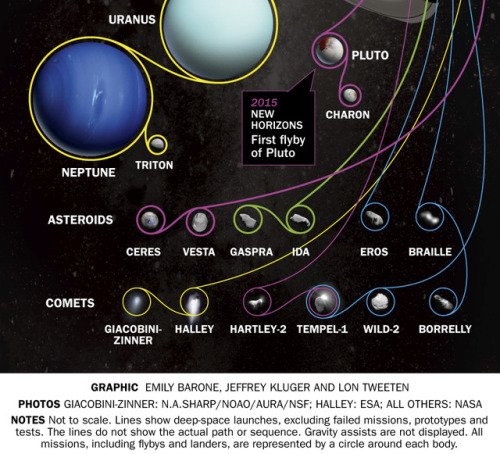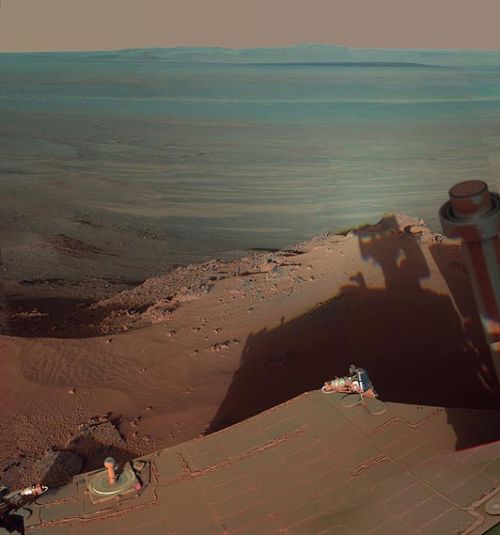I Wish I’d Found This Before Episode 19, Dang It! Such Good Gifs Of Astronauts, Though.
I wish I’d found this before Episode 19, dang it! Such good gifs of astronauts, though.
Coffee in Space: Keeping Crew Members Grounded in Flight
Happy National Coffee Day, coffee lovers!
On Earth, a double shot mocha latte with soymilk, low-fat whip and a caramel drizzle is just about as complicated as a cup of coffee gets. Aboard the International Space Station, however, even just a simple cup of black coffee presents obstacles for crew members.

Understanding how fluids behave in microgravity is crucial to bringing the joys of the coffee bean to the orbiting laboratory. Astronaut Don Pettit crafted a DIY space cup using a folded piece of overhead transparency film. Surface tension keeps the scalding liquid inside the cup, and the shape wicks the liquid up the sides of the device into the drinker’s mouth.

The Capillary Beverage investigation explored the process of drinking from specially designed containers that use fluid dynamics to mimic the effect of gravity. While fun, this study could provide information useful to engineers who design fuel tanks for commercial satellites!

The capillary beverage cup allows astronauts to drink much like they would on Earth. Rather than drinking from a shiny bag and straw, the cup allows the crew member to enjoy the aroma of the beverage they’re consuming.

On Earth, liquid is held in the cup by gravity. In microgravity, surface tension keeps the liquid stable in the container.

The ISSpresso machine brought the comforts of freshly-brewed coffees and teas to the space station. European astronaut Samantha Cristoforetti enjoyed the first cup of espresso brewed using the ISSpresso machine during Expedition 43.


Now, during Expedition 53, European astronaut Paolo Nespoli enjoys the same comforts.

Astronaut Kjell Lindgren celebrated National Coffee Day during Expedition 45 by brewing the first cup of hand brewed coffee in space.

We have a latte going on over on our Snapchat account, so give us a follow to stay up to date! Also be sure to follow @ISS_Research on Twitter for your daily dose of space station science.
Make sure to follow us on Tumblr for your regular dose of space: http://nasa.tumblr.com.
More Posts from Fillthevoid-with-space and Others
The world's oldest story? Astronomers say global myths about 'seven sisters' stars may reach back 100,000 years https://phys.org/news/2020-12-world-oldest-story-astronomers-global.html

Holy shit, this is cool!
So many cultures call the Pleiades some variation of the "seven sisters" despite only having six visible stars. There only appear to be six because two of the stars are so close together as to appear as one.
The myths also mention one sister leaving or hiding to explain why there's only six. And based off observations and measurements, those two that are so close together used to be visibly separate. One literally has moved to hide.
And based off the similarities between the more commonly known Greek myth and the Aboriginal Australian myth, plus some other stuff, this myth could possibly even date back to when humanity still all resided in Africa!
NASA Parachute Device Could Return Small Spacecraft from Deep Space Missions
ISS - International Space Station patch. March 7, 2017
After a two-month stay aboard the International Space Station, NASA’s Technology Educational Satellite (TechEdSat-5) that launched Dec. 9, 2016, was deployed on March 6, 2017 from the NanoRacks platform and into low-Earth orbit to demonstrate a critical technology that may allow safe return of science payloads to Earth from space. Orbiting about 250 miles above Earth, the Exo-Brake, a tension-based, flexible braking device resembling a cross-shaped parachute, opens from the rear of the small satellite to increase the drag. This de-orbit device tests a hybrid system of mechanical struts and flexible cord with a control system that warps the Exo-Brake. This allows engineers to guide the spacecraft to a desired entry point without the use of fuel, enabling accurate landing for future payload return missions.
Small Satellite With Exo-Brake Technology Launches From International Space Station
Two additional technologies will be demonstrated on TechEdSat-5. These include the ‘Cricket’ Wireless Sensor Module, which provides a unique wireless network for multiple wireless sensors, providing real time data for TechEdSat-5. The project team seeks to develop building blocks for larger scale systems that might enable future small or nanosatellite missions to reach the surface of Mars and other planetary bodies in the solar system. For more information on NASA’s small spacecraft technology missions, visit: http://www.nasa.gov/cubesats Image, Video, Text, Credits: NASA/Ames Research Center/Kimberly Williams. Greetings, Orbiter.ch Full article
I found a bizarre open-access, peer-review journal of STEM research. It was hard for me to find anything that pertained to astronomy or any of the stellar studies, but I did find a couple categories I could investigate:
Astrobiology
Astronomical Sciences
Spectroscopy (I didn’t see any astronomical spectroscopy stuff but who knows)
Just looking at the articles popping up suggests that it would take some serious digging to find anything (and I would certainly have to work on my keyword optimization techniques because typing ‘space’ into the search bar got me nothing relevant to my interests), but it’s a new potential resource! And for anyone who wants to find a way to publish in STEM fields, maybe it’s something worth checking out?
If Earth had Saturn’s Rings
From an excellent post by Jason Davis
From Washington, D.C., the rings would only fill a portion of the sky, but appear striking nonetheless. Here, we see them at sunrise.

From Guatemala, only 14 degrees above the equator, the rings would begin to stretch across the horizon. Their reflected light would make the moon much brighter.

From Earth’s equator, Saturn’s rings would be viewed edge-on, appearing as a thin, bright line bisecting the sky.

At the March and September equinoxes, the Sun would be positioned directly over the rings, casting a dramatic shadow at the equator.

At midnight at the Tropic of Capricorn, which sits at 23 degrees south latitude, the Earth casts a shadow over the middle of the rings, while the outer portions remain lit.

via x
why is there star
gas cloud get squished (gravitational collapse) then sometimes smaller elements can squish together to make bigger elements (nuclear fusion) and this continues as long as the smolest elements (hydrogen and helium) are in the core
SpaceX SES-10 Mission successfully Launch
SpaceX - Falcon 9 / SES-10 Mission patch. March 31, 2017
Falcon 9 carrying SES-10 satellite launch
SpaceX took a step into the future Thursday as it reused – for the first time – a recovered first stage of a previously-flown Falcon 9 rocket. Thursday’s mission, carrying the SES-10 communications satellite, lifted off from Pad 39A at Florida’s Kennedy Space Center Thursday 30 March at 18:27 local time (22:27 UTC) and once again landed the booster.
Falcon 9 launch of SES-10
Thursday’s mission made use Falcon 9 the second orbit-capable rocket – after the Space Shuttle – to achieve partial reusability. The Falcon 9 flew from Launch Complex 39A at the Kennedy Space Center, the same pad from which the Shuttle began eighty-two of its missions, including its first and final flights. Reusability has long been a key objective for SpaceX. Making the company’s first launch in March 2006, the small Falcon 1 vehicle carried a parachute system intended to bring its spent first stage back to Earth.
Falcon 9 first stage landed on drone barge
SpaceX’s Falcon 9 rocket deliver SES-10, a commercial communications satellite for SES, to a Geostationary Transfer Orbit (GTO). SES is a world-leading satellite operator, providing reliable and secure satellite communications solutions across the globe.
SES-10 satellite
The SES-10 mission mark a historic milestone on the road to full and rapid reusability as the world’s first reflight of an orbital class rocket. Falcon 9’s first stage for the SES-10 mission previously supported the successful CRS-8 mission in April 2016. For more information about SpaceX, visit: http://www.spacex.com/ Images, Video, Text, Credits: SpaceX/SES. Greetings, Orbiter.ch Full article
Asteroid to Fly Safely Past Earth on April 19
Asteroid Watch logo. April 7, 2017
Artist’s impression of a Near-Earth Asteroid passing by Earth. Image Credit: ESA
A relatively large near-Earth asteroid discovered nearly three years ago will fly safely past Earth on April 19 at a distance of about 1.1 million miles (1.8 million kilometers), or about 4.6 times the distance from Earth to the moon. Although there is no possibility for the asteroid to collide with our planet, this will be a very close approach for an asteroid of this size. The asteroid, known as 2014 JO25, was discovered in May 2014 by astronomers at the Catalina Sky Survey near Tucson, Arizona – a project of NASA’s NEO Observations Program in collaboration with the University of Arizona. (An NEO is a near-Earth object). Contemporary measurements by NASA’s NEOWISE mission indicate that the asteroid is roughly 2,000 feet (650 meters) in size, and that its surface is about twice as reflective as that of the moon. At this time very little else is known about the object’s physical properties, even though its trajectory is well known. The asteroid will approach Earth from the direction of the sun and will become visible in the night sky after April 19. It is predicted to brighten to about magnitude 11, when it could be visible in small optical telescopes for one or two nights before it fades as the distance from Earth rapidly increases.
Asteroid 2014 JO25
Video above: This computer-generated image depicts the flyby of asteroid 2014 JO25. The asteroid will safely fly past Earth on April 19 at a distance of about 1.1 million miles (1.8 million kilometers), or about 4.6 times the distance between Earth and the moon. Video Credits: NASA/JPL-Caltech. Small asteroids pass within this distance of Earth several times each week, but this upcoming close approach is the closest by any known asteroid of this size, or larger, since asteroid Toutatis, a 3.1-mile (five-kilometer) asteroid, which approached within about four lunar distances in September 2004. The next known encounter of an asteroid of comparable size will occur in 2027 when the half-mile-wide (800-meter-wide) asteroid 1999 AN10 will fly by at one lunar distance, about 236,000 miles (380,000 kilometers). The April 19 encounter provides an outstanding opportunity to study this asteroid, and astronomers plan to observe it with telescopes around the world to learn as much about it as possible. Radar observations are planned at NASA’s Goldstone Solar System Radar in California and the National Science Foundation’s Arecibo Observatory in Puerto Rico, and the resulting radar images could reveal surface details as small as a few meters. The encounter on April 19 is the closest this asteroid has come to Earth for at least the last 400 years and will be its closest approach for at least the next 500 years. Also on April 19, the comet PanSTARRS (C/2015 ER61) will make its closest approach to Earth, at a very safe distance of 109 million miles (175 million kilometers). A faint fuzzball in the sky when it was discovered in 2015 by the Pan-STARRS NEO survey team using a telescope on the summit of Haleakala, Hawaii, the comet has brightened considerably due to a recent outburst and is now visible in the dawn sky with binoculars or a small telescope. JPL manages and operates NASA’s Deep Space Network, including the Goldstone Solar System Radar, and hosts the Center for Near-Earth Object Studies for NASA’s Near-Earth Object Observations Program, an element of the Planetary Defense Coordination Office within the agency’s Science Mission Directorate. More information about asteroids and near-Earth objects can be found at: http://cneos.jpl.nasa.gov http://www.jpl.nasa.gov/asteroidwatch For more information about NASA’s Planetary Defense Coordination Office, visit: http://www.nasa.gov/planetarydefense For asteroid and comet news and updates, follow AsteroidWatch on Twitter: https://twitter.com/AsteroidWatch Image (mentioned), Video, Text, Credits: NASA/Tony Greicius/JPL/DC Agle. Greetings, Orbiter.ch Full article
-
 mushroomsinthemaking liked this · 8 months ago
mushroomsinthemaking liked this · 8 months ago -
 nunyo-bizznez liked this · 2 years ago
nunyo-bizznez liked this · 2 years ago -
 t-wav liked this · 4 years ago
t-wav liked this · 4 years ago
A podcast project to fill the space in my heart and my time that used to be filled with academic research. In 2018, that space gets filled with... MORE SPACE! Cheerfully researched, painstakingly edited, informal as hell, definitely worth everyone's time.
243 posts





